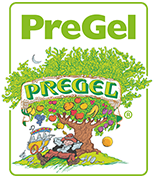It’s so beloved by the American dessert consumer that it has its own day. Annually, soft ice cream, culturally known as soft serve, is celebrated every August 19th. This classic American treat holds a special place in the hearts of young and old, as it stimulates nostalgic memories of hot, hazy summer days, when the air would suddenly produce a magical sound — like that of a music box — which had the definite Pavlovian effect of classical conditioning. Immediately salivating (though mildly) at the familiar sound of the ice cream truck’s melodic bells, children (and adults) would swarm the ice cream utopia on wheels with giant smiles and money in their palms, eager to pay the “ice cream man” and anxiously partake in one of summertime’s favorite and most delicious pastimes — the consumption of ice cream … including the soft version.
Contrary to some understandings, soft serve is in fact real ice cream created in the early 1930s — storied to have been developed by either Tom Carvel, founder of frozen dessert chain Carvel Ice Cream, or J.F. McCullough, founder of soft serve ice cream and fast food restaurant chain, Dairy Queen, with his son Alex — the actual creator remains unclear, similar to the actual definition of what soft serve is.
By definition, soft serve is a soft version of ice cream that is lower in milk fat than regular ice cream and produced at a warmer temperature. Additionally, air is introduced into either a liquid or powdered mix at the time of freezing, making for a creamier texture. However, if the addition of air sounds similar to how gelato, sorbetto, and frozen yogurt are made, it is. But according to Michael Downing, pastry chef, PreGel International Training Centers – NC, the difference in soft serve is due to the machine.
Chef Downing explains that there are generally two types of soft serve machines: gravity-fed and pump-fed. “Gravity-fed means that there
is a hopper on the top of the machine that holds the liquid mix that is pulled by gravity through a hole, where it then travels through a freezing chamber,” Chef Downing begins. “With traditional gelato/ice cream batch freezers and ‘gravity fed’ soft serve machines, the air is incorporated by the blade in the machine’s freezing chamber when it spins,” Chef Downing continues.
“In pump-fed soft serve machines, there is also a hopper or container that holds the liquid mix. The difference is that, instead of the mix simply draining into the freezing chamber through a hole in the hopper, the liquid is forced into the freezing chamber via a pump system using air,” Chef Downing elaborates.
But regardless of which kind of machine is used to make soft serve, Americans love this classic treat for several reasons, as posted by online dining news and trends resource, www.dailymeal.com:
- It’s gentler on sensitive teeth due to its warmer temperature
- Its soft, airy texture, which is due to a combination of lower fat content and stabilizers that keep your cone from melting at lightning speed
- It’s a nostalgic treat
- The visually appealing look of a seductive single or dual swirl either plain, coated, or sprinkled
With 70% of ice cream sold being the soft version, according to a study conducted by market research company, the NPD Group, and it’s growing international appeal, soft serve has a long future of serving the business needs of entrepreneurs and pleasing the consumer market. Whether it’s soft serve ice cream, sorbetto, custard, frozen yogurt, or gelato, the menu options and profit margins both have the potential to increase in this industry via cone, cup, frozen pop, milkshake, ice cream sandwich, cake, pie, etc.
